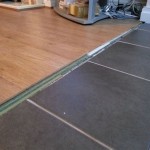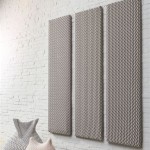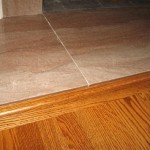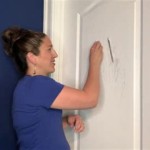Options For Achieving a Tile Look In Your Home in Florida
Tile flooring is a popular choice for Florida homeowners due to its durability, aesthetic appeal, and resistance to moisture. The warm, humid climate and the potential for water damage from hurricanes and storms make tile a practical and attractive flooring solution. However, traditional tile installation can be costly and time-consuming. Fortunately, several alternative options are available that can achieve a similar tile look while offering advantages in terms of cost, installation ease, and maintenance.
This article will explore various options for achieving the tile aesthetic in Florida homes, examining the pros and cons of each, allowing homeowners to make informed decisions based on their specific needs and budget. We will delve into alternatives such as luxury vinyl plank (LVP), porcelain tile alternatives, concrete overlays, and painted or stenciled flooring. Each option presents a unique approach to replicating the beauty of tile without the inherent drawbacks of traditional tile installation.
Luxury Vinyl Plank (LVP) with Tile Patterns
Luxury Vinyl Plank (LVP) has emerged as a leading alternative to traditional tile, particularly in areas prone to moisture, such as Florida. LVP is constructed from multiple layers of synthetic materials, including a durable wear layer, a decorative printed layer, and a waterproof core. This composition makes LVP highly resistant to scratches, stains, and water damage, making it an ideal choice for bathrooms, kitchens, and entryways.
One of the key advantages of LVP is its ability to mimic the appearance of various materials, including tile. Manufacturers employ advanced printing technologies to create realistic tile patterns, textures, and grout lines on the LVP surface. This allows homeowners to achieve the desired tile look without the high cost and labor associated with installing ceramic or porcelain tile. LVP is available in a wide range of tile styles, including ceramic, porcelain, and stone looks, providing flexibility in design and aesthetic appeal.
Furthermore, LVP is significantly easier and faster to install than traditional tile. Many LVP products feature a click-lock installation system, allowing for a floating floor installation without the need for mortar or grout. This simplifies the installation process and reduces the overall cost, making LVP an attractive option for DIY enthusiasts or homeowners seeking to minimize labor expenses. In addition, the floating installation method allows for easy removal and replacement of individual planks, should they become damaged or worn over time.
Comfort is another factor that distinguishes LVP from traditional tile. Tile can be cold and hard underfoot, which can be uncomfortable, particularly during colder months. LVP, on the other hand, provides a softer and warmer surface, enhancing the overall comfort of the living space. Some LVP products even include a cushioned underlayment for added comfort and sound absorption. This makes LVP a particularly appealing option for bedrooms, living rooms, and other areas where comfort is a priority.
Maintenance of LVP is also relatively simple and straightforward. Unlike tile, which requires regular grout cleaning and sealing, LVP is easy to clean with a damp mop and mild detergent. The waterproof surface prevents stains and spills from penetrating, making LVP a low-maintenance flooring option for busy households. This ease of maintenance contributes to the long-term cost-effectiveness of LVP, as it eliminates the need for expensive cleaning products or professional maintenance services.
However, LVP does have some limitations. While it effectively mimics the appearance of tile, it does not replicate the same level of authenticity or durability as genuine tile. LVP is susceptible to dents and scratches from heavy furniture or sharp objects, particularly if the wear layer is thin. In addition, LVP may not be as resistant to extreme temperatures as tile, which could be a concern in some areas of Florida. Despite these limitations, LVP remains a popular and cost-effective alternative to tile, offering a combination of aesthetic appeal, durability, and ease of installation.
Porcelain Tile Alternatives: Thinner and Larger Format Tiles
While LVP aims to mimic tile, another approach is to explore porcelain tile alternatives that offer similar benefits to traditional tile but with improved characteristics for easier installation and enhanced design possibilities. Thinner and larger format porcelain tiles are gaining popularity as they provide a streamlined installation process and a more contemporary aesthetic. These tiles offer a unique blend of durability, style, and practicality, making them a competitive option for achieving a tile look in Florida homes.
Traditional porcelain tile is known for its exceptional strength and resistance to water, stains, and scratches. However, it can be heavy and difficult to cut, requiring specialized tools and expertise for installation. Thinner porcelain tiles address these challenges by reducing the weight and thickness of the material, making it easier to handle and cut. This reduces the labor required for installation and makes it more accessible for DIY projects.
Larger format tiles minimize the number of grout lines, creating a seamless and visually appealing surface. Fewer grout lines translate to easier cleaning and maintenance, as there are fewer areas for dirt and grime to accumulate. Additionally, the larger size of the tiles creates a more spacious and modern look, enhancing the overall aesthetic of the room. This is particularly beneficial in smaller spaces, where larger tiles can create the illusion of greater size.
These thinner and larger format tiles also benefit from being made of porcelain. Porcelain is fired at very high temperatures, resulting in a dense and non-porous material. This makes it highly resistant to water absorption, making it ideal for use in bathrooms, kitchens, and other areas prone to moisture. The durability of porcelain also ensures that the tiles can withstand heavy foot traffic and resist scratches and stains, maintaining their appearance for years to come.
The installation of these alternative porcelain tiles often involves the use of specialized adhesives and leveling systems to ensure a flat and even surface. While the installation process may still require some expertise, it is generally less labor-intensive than installing traditional tile. The lighter weight and larger size of the tiles reduce the amount of cutting and maneuvering required, making the installation process faster and more efficient.
Furthermore, the availability of a wide range of colors, patterns, and textures in porcelain tiles allows homeowners to achieve a variety of design styles. From classic marble looks to contemporary geometric patterns, porcelain tiles offer endless possibilities for creating a unique and personalized space. The ability to mimic the appearance of natural stone, wood, and other materials makes porcelain tiles a versatile option for any design aesthetic.
While thinner and larger format porcelain tiles offer significant advantages, they also have some drawbacks. The initial cost of the materials may be higher than that of traditional tile, particularly for premium designs and patterns. Additionally, the installation process may require specialized tools and expertise, which can increase the overall cost of the project. Despite these potential drawbacks, the long-term benefits of durability, ease of maintenance, and aesthetic appeal make thinner and larger format porcelain tiles a worthwhile investment for homeowners seeking a tile look in their Florida homes.
Concrete Overlays and Stenciled Flooring
For homeowners seeking a more unique and customizable approach to achieving a tile look, concrete overlays and stenciled flooring offer creative solutions. These options involve applying a thin layer of concrete over an existing floor and then using stencils or other techniques to create the appearance of tile. This approach allows for a high degree of personalization and can be a cost-effective alternative to traditional tile installation.
Concrete overlays are thin layers of cement-based material that are applied over an existing concrete floor. The overlay can be applied to a variety of substrates, including concrete, wood, and tile, making it a versatile option for transforming existing floors. Once the overlay is applied, it can be textured, stained, or stenciled to create the desired tile look.
The process of creating a stenciled floor involves using stencils to apply paint or stain to the concrete overlay. The stencils can be custom-designed to create unique patterns and designs, allowing homeowners to achieve a personalized tile look. The use of multiple colors and textures can further enhance the visual appeal of the stenciled floor, creating a realistic and eye-catching effect.
One of the key advantages of concrete overlays and stenciled flooring is their durability. Concrete is a strong and resilient material that can withstand heavy foot traffic and resist scratches and stains. When properly sealed, concrete overlays are also resistant to water damage, making them suitable for use in bathrooms, kitchens, and other areas prone to moisture.
Another advantage of this approach is its cost-effectiveness. Concrete overlays are generally less expensive than installing traditional tile, particularly when considering the labor costs associated with tile installation. The use of stencils and paint allows for a high degree of personalization without the need for expensive custom-made tiles.
Furthermore, concrete overlays and stenciled flooring offer a sustainable flooring solution. By utilizing an existing floor as a substrate, this approach reduces the need for new materials and minimizes waste. Concrete is also a readily available and environmentally friendly material, making it a responsible choice for homeowners seeking to reduce their environmental footprint.
However, concrete overlays and stenciled flooring also have some limitations. The installation process requires careful preparation and execution to ensure a smooth and even surface. Cracks and imperfections in the existing floor must be properly repaired before applying the overlay, and the stenciling process requires precision and attention to detail. It is recommended to hire a professional contractor experienced in concrete overlays and stenciled flooring to ensure a high-quality result.
The maintenance of concrete overlays and stenciled flooring involves regular cleaning and sealing to protect the surface from stains and damage. The frequency of sealing will depend on the type of sealer used and the amount of foot traffic the floor receives. It is also important to avoid using harsh chemicals or abrasive cleaners, as these can damage the surface and fade the colors of the stenciled design.
In conclusion, concrete overlays and stenciled flooring offer a creative and customizable approach to achieving a tile look in Florida homes. While the installation process may require some expertise, the resulting floor is durable, cost-effective, and visually appealing. This option is particularly well-suited for homeowners seeking a unique and personalized flooring solution that reflects their individual style and preferences.

Tips For Choosing The Best Flooring Your Southwest Florida Home

Tips For Choosing The Best Flooring Your Southwest Florida Home

5 Natural Stones For Stone Entranceways

5 Natural Stones For Stone Entranceways

A Quick Guide To Picking The Perfect Bathroom Tile Redfin

Increase The Value Of Your Home With Porcelain Tile Floor

Florida Tile Home Collection Silver Sands Grey 12 In X 24 Matte Porcelain Floor And Wall 13 62 Sq Ft Case Chded0312x24 The Depot

Which Tile For The Entry Of Our New House Renovating My

Florida Tile Home Collection Sediment Slate Black 12 In X 24 Porcelain Floor And Wall 13 62 Sq Ft Case Chdesds1012x24 The Depot

Which Tile For The Entry Of Our New House Renovating My
Related Posts








